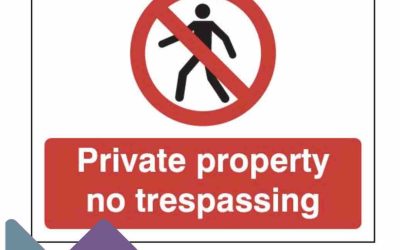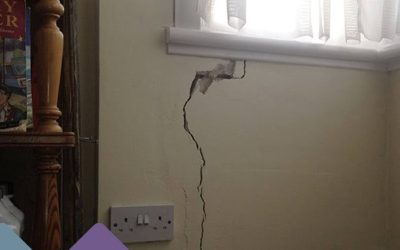In today’s property surveying blogpost topic, we are going to be looking at party wall surveying procedures, and in particular the Adjoining Owner’s legal right to recover costs and fees in the event that the Building Owner opts to abandon their proposed works, thereby muting the party wall procedures.
Thank you for clicking on today’s blogpost. Here at Stokemont we regularly write informative and impartial blogposts, in an effort to help clarify and resolve those trickier topics within the surveying world.
Party Wall Surveying procedures come into play when a Building Owner is planning on undertaking construction works to their property. Those construction works must fall within the realm of the Party Wall etc Act 1996, and commonly these are:
- The construction of new walls up to, or astride, the boundary line
- Works directly to a party wall, party fence wall (garden wall) or party structure (ceiling/floor)
- Excavations within 6m of a neighbouring structure
As I am sure you can imagine, these definitions are far and wide, and for that reason the majority of residential works that owners undertake to their properties, do often fall within the realm of the Party Wall etc Act.
The Act requires that a Building Owner must serve a Party Wall Notice upon the affected Adjoining Owner a minimum of one month in advance of the works being undertaken. It is also worth noting that there are sections within the Act that require a Building Owner to serve this Notice two months in advance.
Once that Party Wall Notice has been served, the Building Owner has effectively invoked the party wall procedures upon the Adjoining Owner, with the Adjoining Owner then having the legal right to seek professional input and advice from a party wall surveyor.
This would effectively mean that they ask a party wall surveyor to step in and act on their behalf, effectively ensuring that they are fully informed and well-protected through the party wall surveying process itself.
The party wall surveyor’s role will be one of review and protection, with the intent being that the Adjoining Owner’s property is considered from the perspective of the proposed construction works, all of the necessary protective provisions are implemented to ensure that the Adjoining Owner is best safeguarded. These protective provisions can be far and wide, and can range from anything from a reduction in working hours to take account of the Adjoining Owner’s occupancy request, or alternatively the implementation of specific construction requirements, thereby reducing the structural risk and knock-on effective damage to the Adjoining Owner’s property.
Once the party wall surveyor is initially contacted by the Adjoining Owner, at that stage they will undertake necessary legal checks, along with full construction checks and information review, to ensure that they have a full understanding of the proposed works, and can best advise the Adjoining Owner, their Appointing Owner.
In doing this, the party wall surveyor will naturally have to incur some time, as they will effectively need to undertake a full and thorough review, so that they can best ensure the Adjoining Owner’s rights are considered, and ultimately also advise their client both on the procedural aspects of the Act, but also the construction work-specific considerations that will come into play.
This begs the question, what would happen in the event that the Building Owner posts a Party Wall Notice and then decides to abandon, stop or stall the works.
The surveyor would have already reasonably incurred time, which they will rightfully want to recover their costs for. However, it is not uncommon for building owners to be surprised by this, and suggest that they should not have to bear the costs of the Adjoining Owner’s surveyor’s fees, as the procedures are effectively no longer taking place, and the proposed works will not be progressed.
Here at Stokemont, we think it is totally reasonable for an Adjoining Owner’s surveyor to request recovery of their costs, as ultimately, they will want to ensure that each and every client and Appointing Owner is given the full protection that the Act allows them, and ultimately, they are only able to do this through the careful review and consideration of the Building Owner’s proposed works on the Adjoining Owner’s property.
In order to do that, there is no other way other than incurring reasonable time, as ultimately if they were to open each and every file in the knowledge that they may not be able to recover their fees, it’s a firm bet that the surveyors would start to take a less proactive and thorough approach to the initial review, which ultimately could leave Adjoining Owners in the position of being uninformed and unclear on the party wall procedural requirements.
Here at Stokemont, we believe that for your conventional works, 1-2 hours of surveyor’s time is a wholly reasonable request, as well as a half and hour to an hour for administration time, as ultimately it will be the party wall surveyor’s administrator who undertakes the administerial aspects of the job including file set-up.
For your more complex jobs, we would advise a slightly higher hourly spend, as ultimately there will be more information to review, and a more careful approach that needs to be taken.
If you would like to discuss party wall surveying procedures with our team of qualified and experienced party wall surveyors today, give us a call, and we will be more than happy to assist you.




